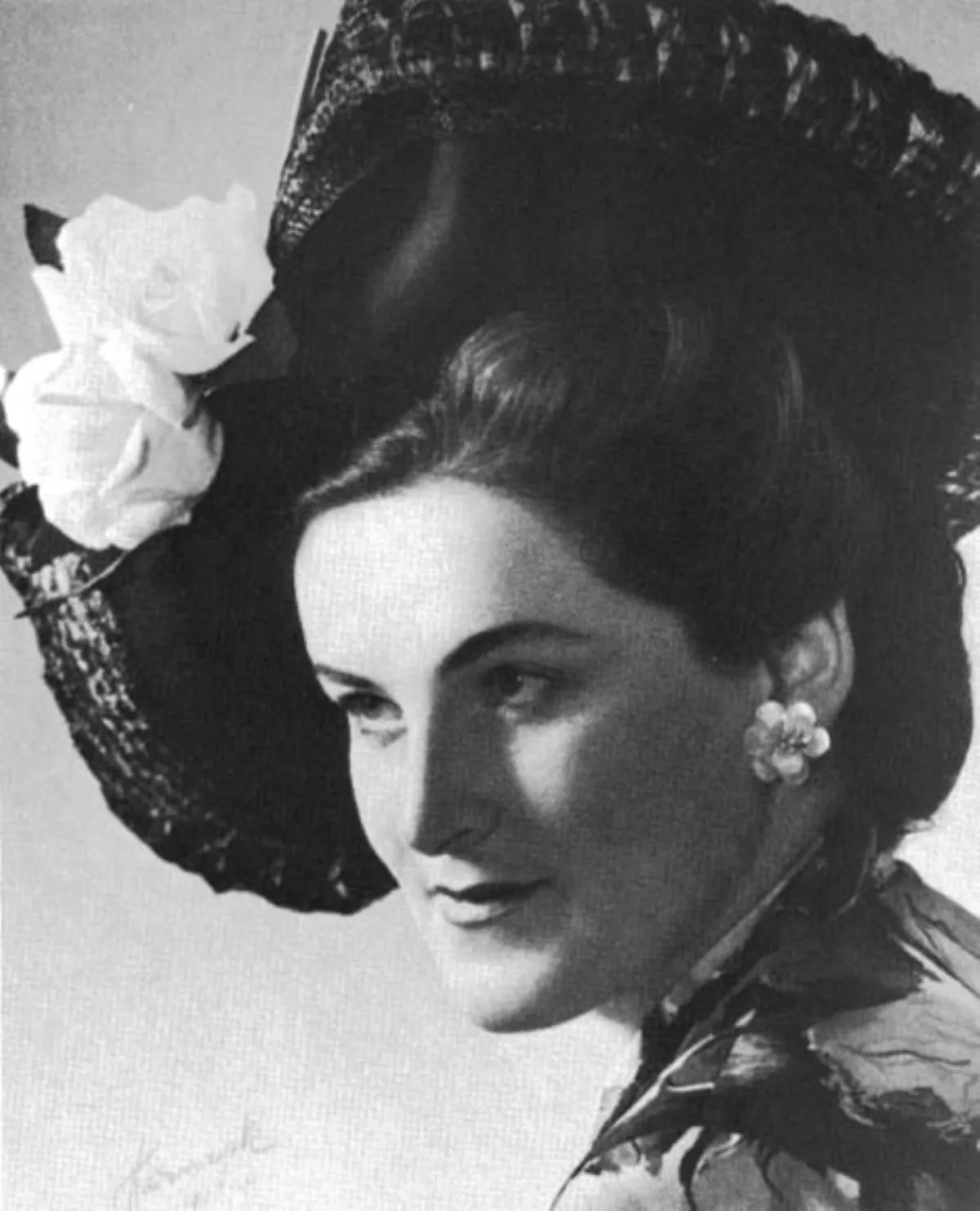 1.
1. Marta Birgit Nilsson was a Swedish dramatic soprano.

 1.
1. Marta Birgit Nilsson was a Swedish dramatic soprano.
Birgit Nilsson's voice was noted for its overwhelming force, bountiful reserves of power, and the gleaming brilliance and clarity in the upper register.
Birgit Nilsson was born Marta Birgit Svensson on a farm at Vastra Karup in Skane to Nils Svensson and Justina Svensson.
Birgit Nilsson once told an interviewer that she could sing before she could walk, adding, "I even sang in my dreams".
Birgit Nilsson studied with Ragnar Blennow in Astorp for six months to prepare for an audition at the Royal Swedish Academy of Music in Stockholm where she came in first out of a group of 47 singers and was awarded the Christina Nilsson scholarship named for the famous soprano.
In 1946, Birgit Nilsson made her debut at the Royal Swedish Opera in Stockholm with only three days' notice, replacing the ailing singer scheduled for the role of Agathe in Carl Maria von Weber's Der Freischutz.
Birgit Nilsson was instrumental in securing her first important engagement outside Sweden, as Electra in Mozart's Idomeneo at the Glyndebourne Festival in 1951.
Birgit Nilsson's debut at the Vienna State Opera in 1953 was a turning point; she would be a regular performer there for more than 25 years.
Birgit Nilsson took the title role of Turandot, which is brief but requires an unusually big sound, to La Scala in Milan in 1958, and then to the rest of Italy.
Birgit Nilsson made her American debut as Brunnhilde in Wagner's Die Walkure in 1956 with the San Francisco Opera.
Birgit Nilsson attained international stardom after a performance as Isolde at the Metropolitan Opera in New York City in 1959, which made front-page news.
Birgit Nilsson said that the single biggest event in her life was being asked to perform at the opening of the 180th season at La Scala as Turandot in 1958.
Birgit Nilsson performed at many major opera houses in the world including Vienna, Berlin, the Royal Opera House at Covent Garden, Tokyo, Paris, Buenos Aires, Chicago, and Hamburg.
Birgit Nilsson sang with the Sydney Symphony Orchestra in the all-Wagner concert that opened the Concert Hall of the Sydney Opera House in 1973.
Birgit Nilsson was widely known as the leading Wagnerian soprano of her time, the successor to the great Norwegian soprano Kirsten Flagstad, particularly as Brunnhilde.
Birgit Nilsson had, according to The New York Times, a "voice of impeccable trueness and impregnable stamina".
Twice at the Met, Birgit Nilsson sustained injuries that kept her from performing.
Birgit Nilsson did not get along with famous conductor Herbert von Karajan.
Birgit Nilsson then cabled Bing, informing him she had to cancel the next two performances because she had contracted rabies.
Birgit Nilsson became one of the highest-paid singers in the field, in part because of the rarity of her skills.
Birgit Nilsson would begin contract talks by refusing every offer and being evasive about her availability.
That's the place where you have your purse", Birgit Nilsson replied, "I'm so pleased to find we have something in common.
Birgit Nilsson said her voice was not a good fit with what she described as the softer textures and refined tones of Italian operas.
Birgit Nilsson appeared at the Metropolitan Opera 223 times in 16 roles.
Birgit Nilsson played most of the other major soprano parts: Aida, Tosca, the Dyer's Wife in Strauss's Die Frau ohne Schatten, Salome, Elektra, Verdi's Lady Macbeth, and Leonore in Beethoven's Fidelio.
Birgit Nilsson memorably appeared as replacement Sieglinde to Rita Hunter's Brunnhilde in the 1970s.
Birgit Nilsson appeared 232 times at the Vienna State Opera from 1954 to 1982, and the Vienna Philharmonic, the company's orchestra, made her an honorary member in 1999.
Birgit Nilsson retired in 1984 to her childhood home in the Skane province of southern Sweden, where her father had been a sixth-generation farmer and she had worked to grow beets and potatoes until she was 23.
Birgit Nilsson received the Illis quorum gold medal, today the highest award that can be conferred upon a Swedish citizen by the Government of Sweden.
Birgit Nilsson died, aged 87, on 25 December 2005 at her home at Bjarlov, a small village near Kristianstad in Skane in the same county where she was born.
Birgit Nilsson was survived by her husband Bertil Niklasson, a veterinary surgeon whom she had met on a train and married in 1948.
Three years after Nilsson's death, in December 2008, the Birgit Nilsson Foundation announced that it would award a prize every two to three years to a concert or opera singer, a classical or opera conductor, or a specific production by an opera company.
The foundation said that Birgit Nilsson had chosen the first winner, to be announced in early 2009.
The second winner of the Birgit Nilsson prize was Riccardo Muti, who received the award in Stockholm on 13 October 2011.